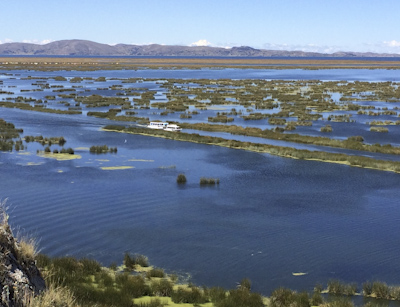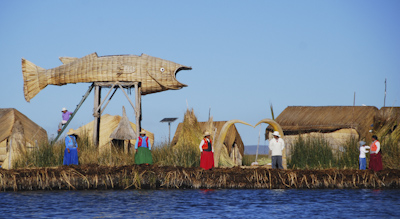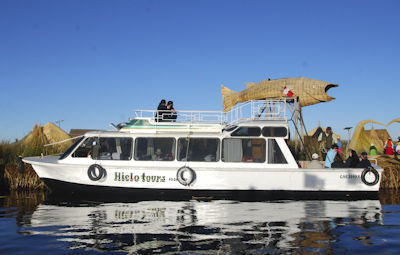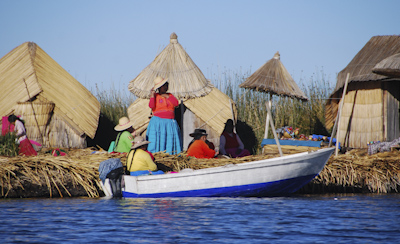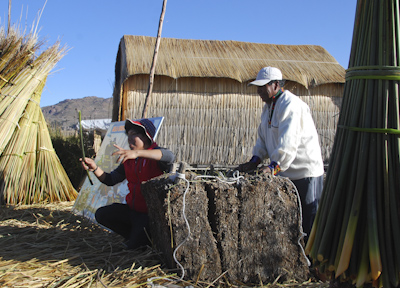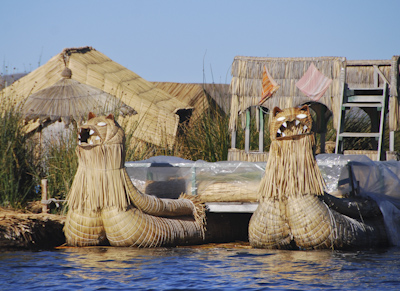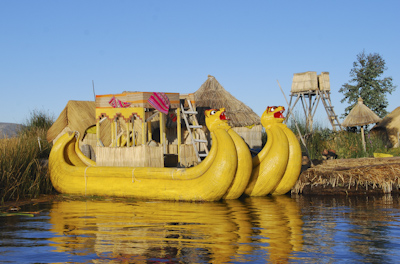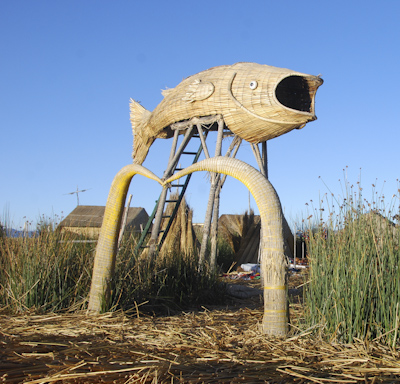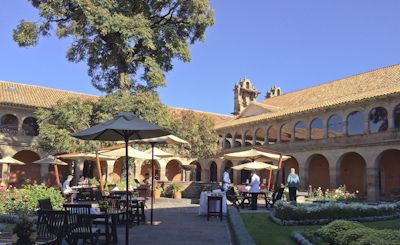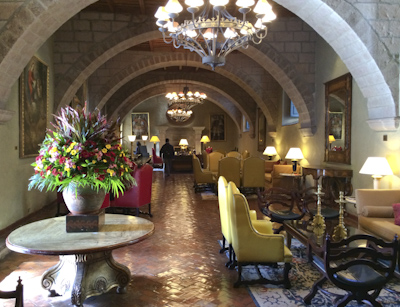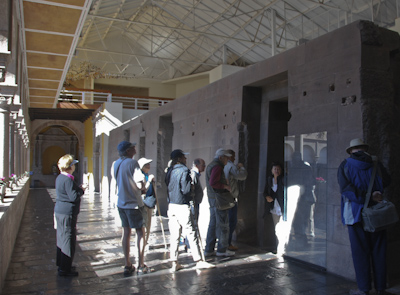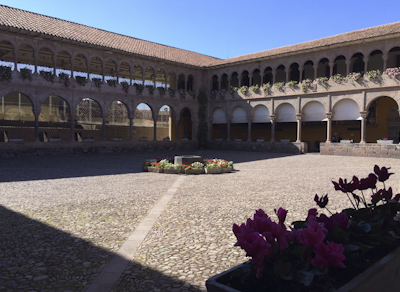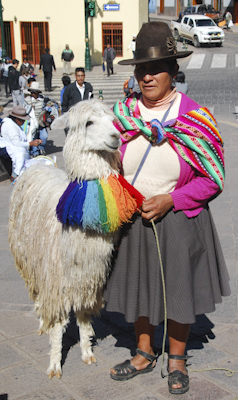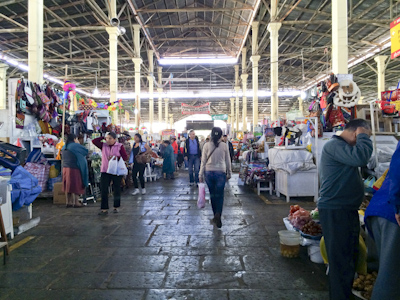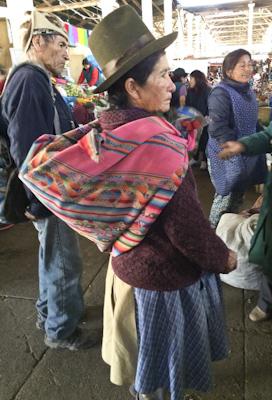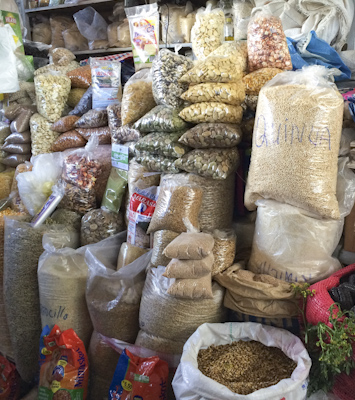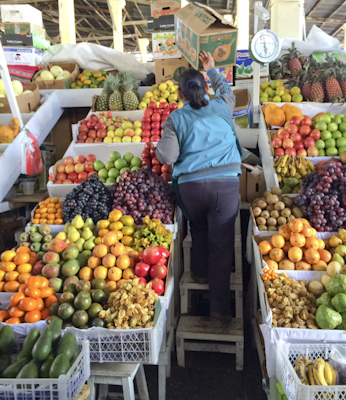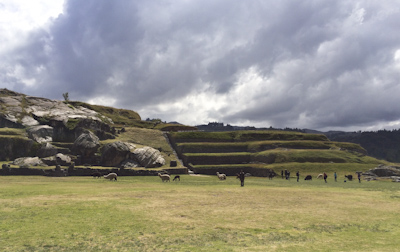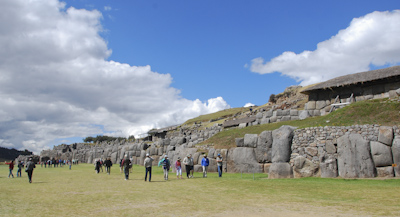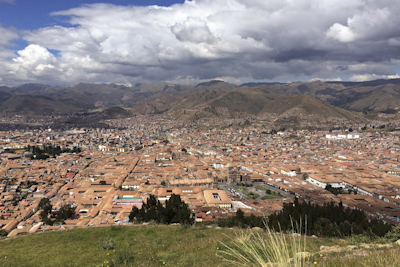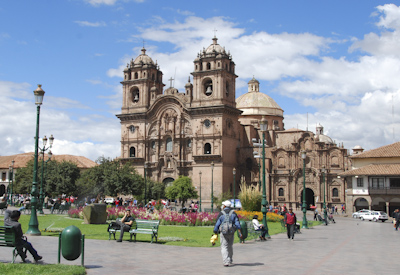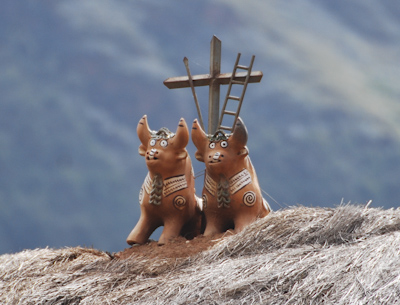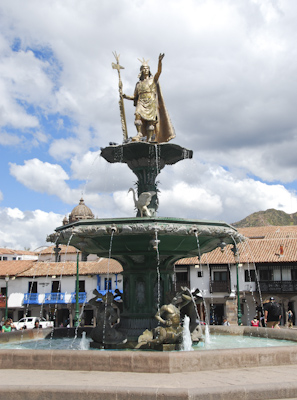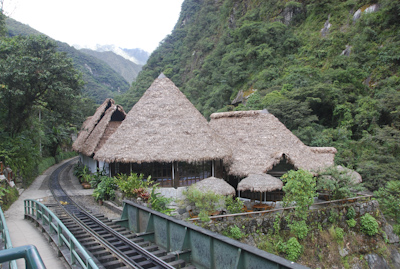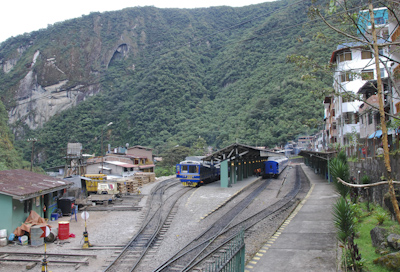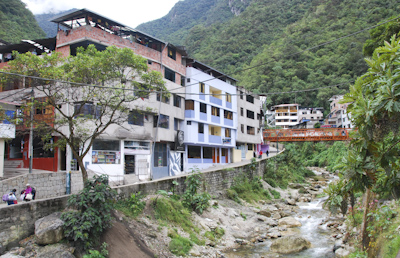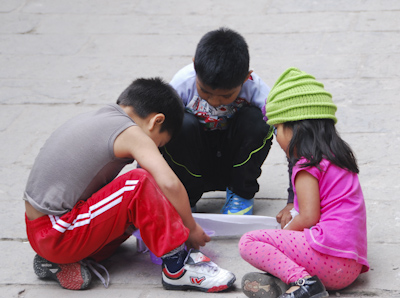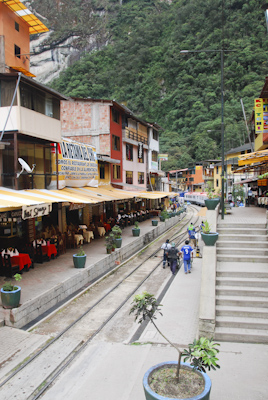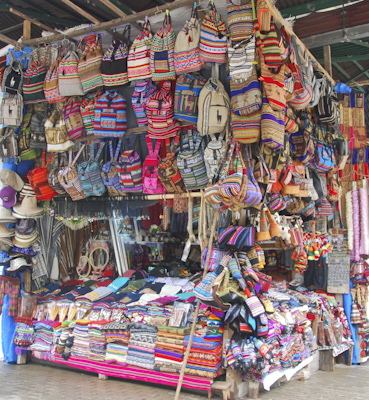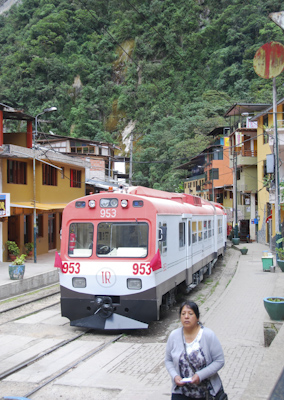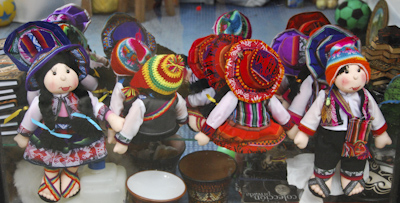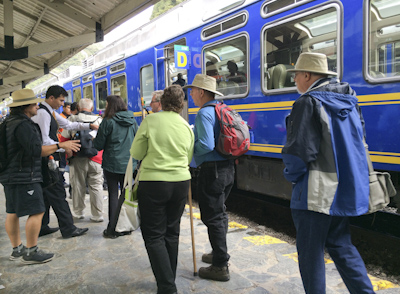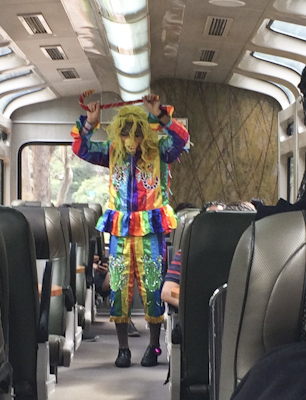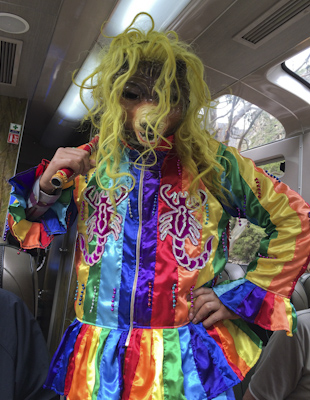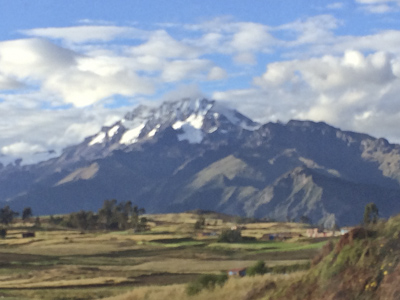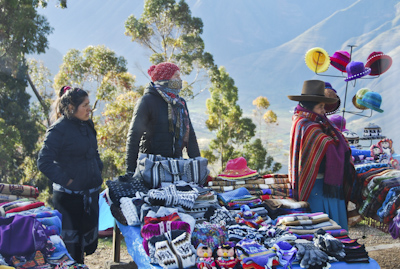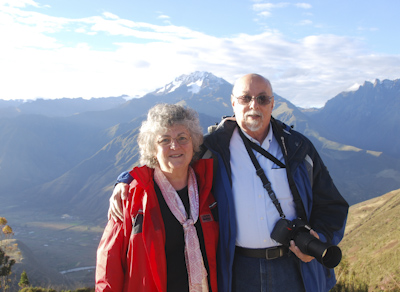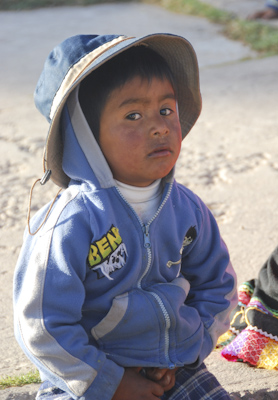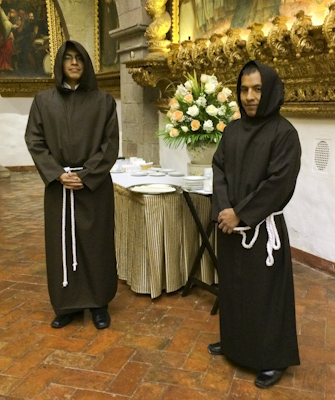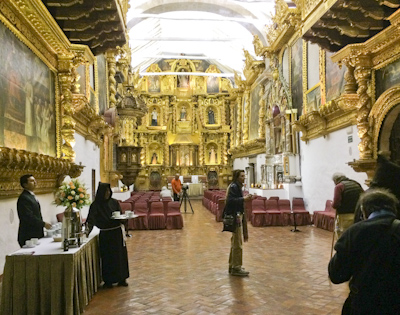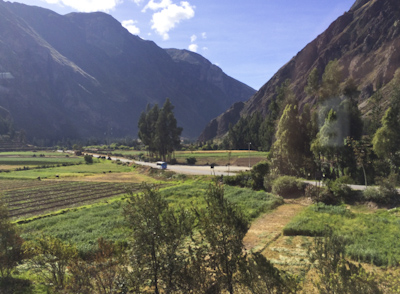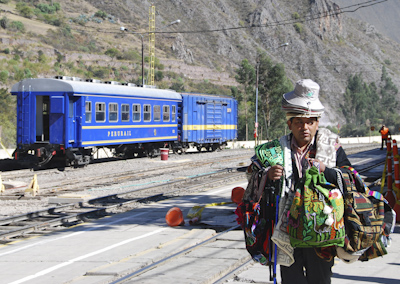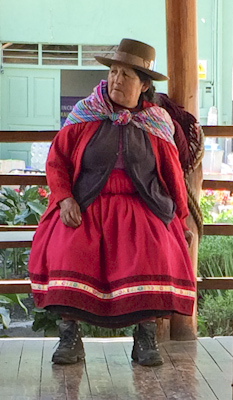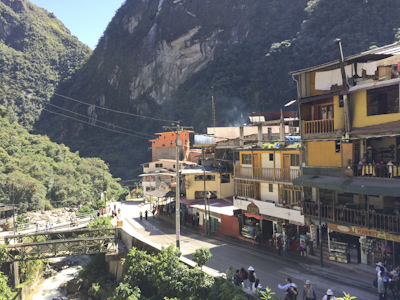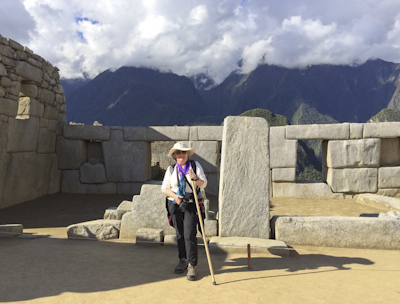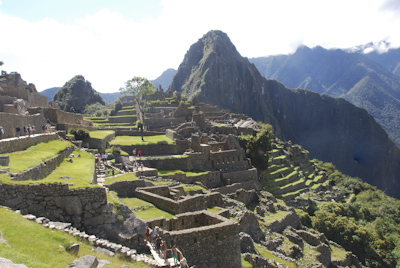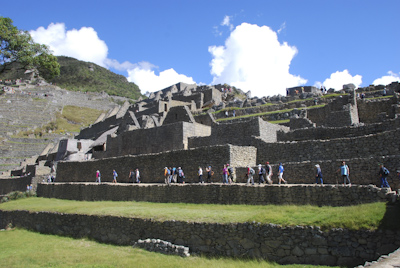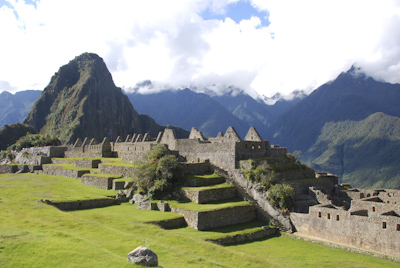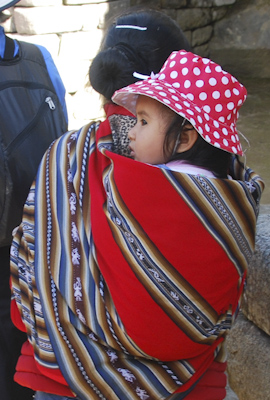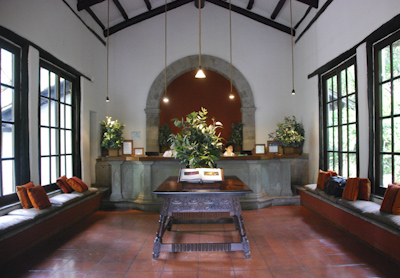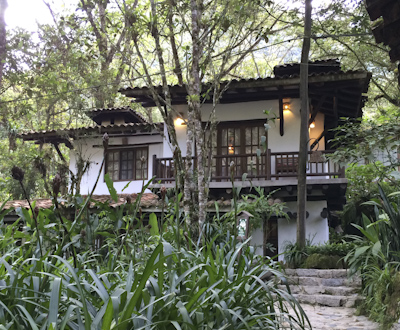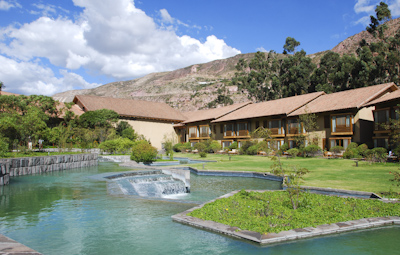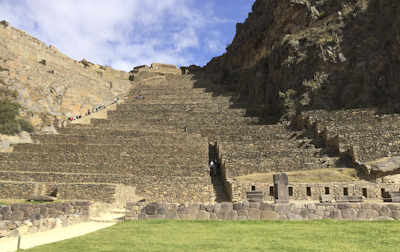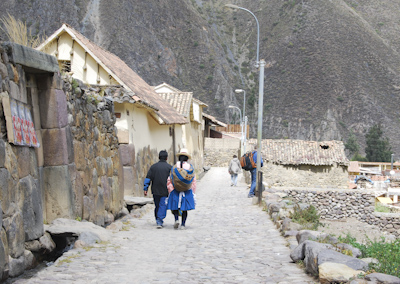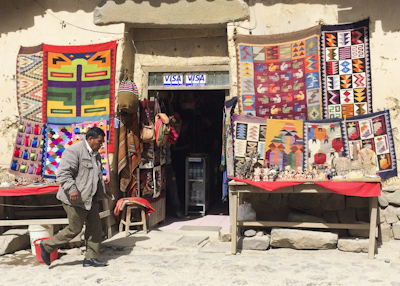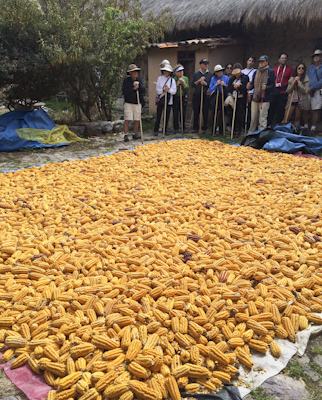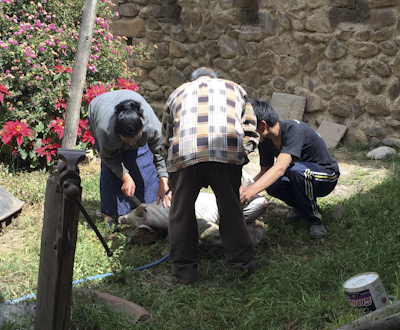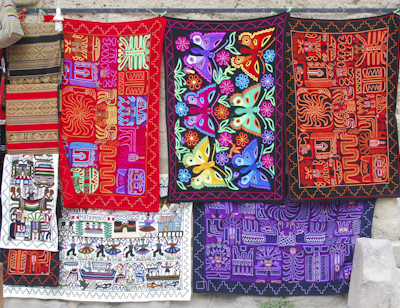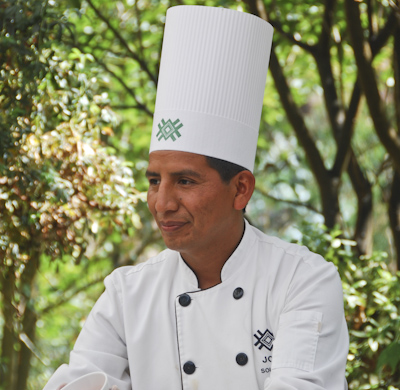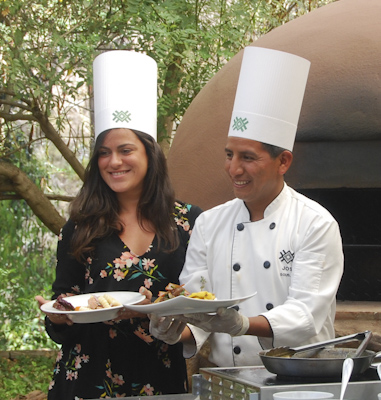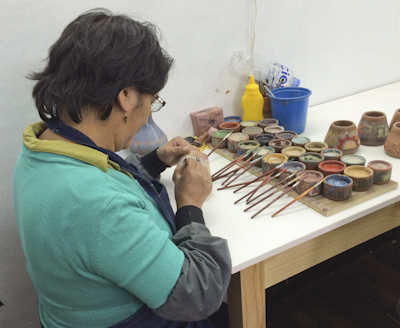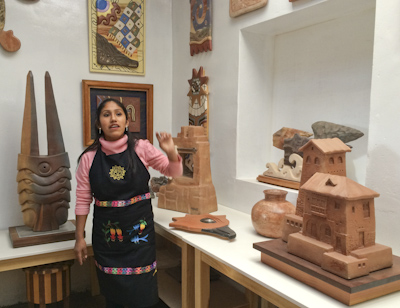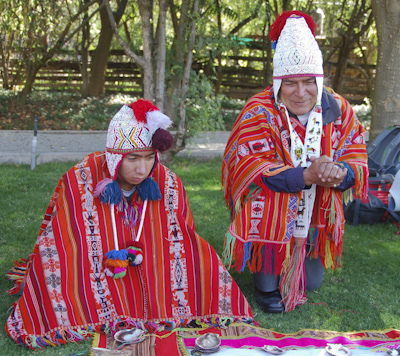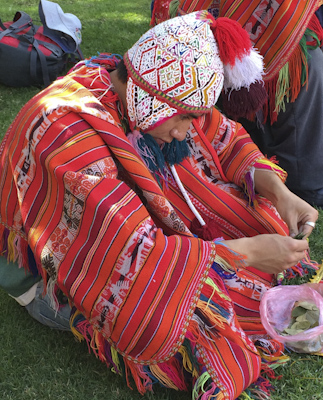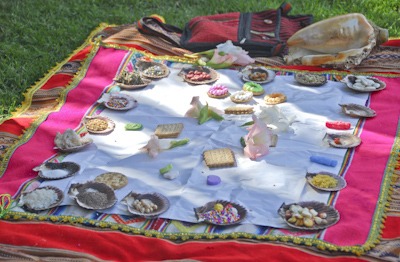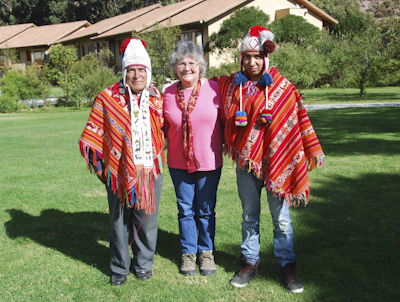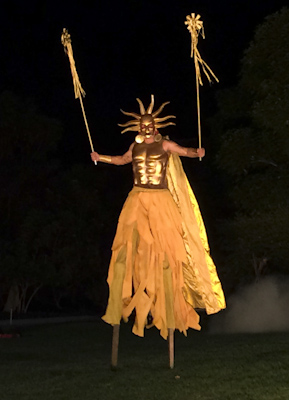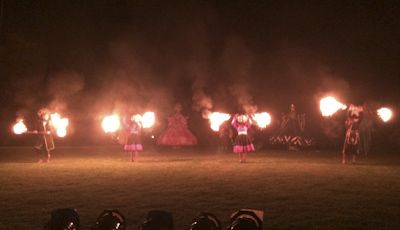Wednesday – May 27, 2015
Yesterday had been a very long day when we arrived at the Libertador Lago Hotel late last night. Marcos gave us a “leisurely morning” and we needed it. When I finally awoke and looked out on glistening Lake Titicaca, I was relieved we made it there. It had been a grueling night driving slowly in the bus on bumpy roads in pitch darkness. We didn’t know when the curfew would start or if we could avoid it. We passed through several very poor, shuttered villages and I was glad we didn’t have to ‘find a place to stay.’
Lake Titicaca! The incredibly blue lake is one of the largest lakes in South America and, at 12,500 feet elevation, is the highest navigable body of water in the world. I learned the deep lake is 120 miles long and fifty miles wide and divided into three parts. We were in the northern, shallow section across from the city of Puno.
After a restful morning, Marcos arranged for us to visit the Uros people on one of their floating reed islands. In order to be fair to everyone, they try to regulate which island tourists can visit at any particular time. We were allowed to visit ‘Big Fish’ Island.
The people originally built the moving islands to flee from invading Incans who were pushing south but were eventually conquered. Today, the Uros continue to live as they have for centuries subsisting on fish, birds, edible parts of the reeds, and quinoa.
We watched a demonstration of how the islanders use bundles of dried totora reeds and roots to construct the islands. Reeds are also used to build their houses, mats, boats, towers and anything else they need. Dense root bundles form supports which are anchored to the ground. New reeds are piled on top for a thickness of approximately two or three feet. Because they rot away, the reeds are replenished every three months, or as needed.
We were invited to enter the home of the Uros man and woman pictured above. It was a simple room with a carpet-covered large bed and reed benches along the walls. A single light bulb hung from the ceiling which was attached to a small outside solar collector. I noticed a pan-pipe and a boom-box in one corner. A few articles of clothing hung on pegs pushed through the reed walls. The man said they had five children and two grandchildren who still lived on their little island.
There were currently about forty-two islands ranging in size from three to ten families. The islands are approximately a hundred to two hundred feet across depending on the number of people/families who live there.
Tourists have helped the economy of the Uros people, to enable them to purchase what they need from the city. However, numerous tourists have caused damage to the islands, increasing the need for maintenance. Recently, more young people prefer to live in the city. I wonder about the future of the gentle Uros people who live such a fragile existence.
